Experimenting with the origins of the universe
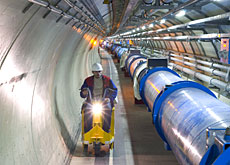
On the Swiss-French border, 6,500 scientists have come together to try to understand the nature of the stardust that makes up the universe.
The place is Cern – an institution that is slowly opening itself up to the public. swissinfo went along to find out why anti-matter matters.
The European Organization for Nuclear Research in Geneva is going to extraordinary lengths to answer the question – where do we come from?
Cern has just opened two more experimental facilities to the public, the Compass experiment and the computing centre, increasing the number of sites for visitors to seven.
Most interested in a tour are students or physics enthusiasts. But even those of us with little or no scientific know-how can benefit from the biggest practical physics lesson in Europe.
Arriving at Cern, I had expectations of architectural grandeur, but was a little disappointed.
More than 50 years after its creation, Cern has an air of tired functionality – something between an industrial estate and a university.
Dominique Bertola of the visitor service tells me that all the money is spent on the science.
This is the place where the pursuit of knowledge has led scientists to build a 27-km ring tunnel, called the Large Hadron Collider (LHC), 100 metres underground.
Speed of light
For particle physics, even the larger European countries could not afford to construct a laboratory as big as Cern. That’s why they decided to pool their resources here.
Cern exists primarily to provide physicists with the necessary tools to explore what matter is made of and what holds it together.
These tools are accelerators, like the SFr6 billion LHC, which accelerate particles to almost the speed of light and then smash them into each other. A particle is about one trillionth the size of a mosquito.
Four detectors attached to the LHC accelerator will make the particles visible. They will detect the head-on particle collisions so that physicists can explore new territory in matter, energy, space and time.
Up close, this machinery is enormous and incredibly complex. The largest detector, called the Atlas experiment, is the product of collaboration among scientists from 34 countries.
Despite the cutting-edge technology, this is not a top-secret off-limits research centre. “The research carried on in Cern is public property and intended for publication,” Bertola says.
The complex is open to visitors, on a pre-booked basis, all year round. Last year it received 24,000 visitors.
Practical benefits
If the Cern scientists’ goal is simply knowledge for the sake of knowledge, the practical benefits often come later.
Some of the technologies developed at Cern during research into particle physics have had applications for cancer therapy, medical and industrial imaging, measuring instruments, and new manufacturing processes and materials.
The World Wide Web was developed by two Cern scientists and much of the Europe-United States internet traffic still goes through Cern servers.
One of the newest areas to be open to the public from the beginning of December is the computer centre, which houses the calculation capacity and archives for the LHC.
There is no point in generating all that data if you can’t find a way to analyse and store it. For that you need computer processing power and lots of it.
The Grid
Cern is currently developing new global networking technology called the Grid. This will link tens of thousands of computers worldwide to create a vast global computing resource for the LHC experiments.
What can be seen on the Cern site is their contribution to the Grid – the PC Farm. It is massive basement with row upon row of computers lined up like battery hens. The noise from the cooling system is deafening.
Some of the computers are ordinary PCs, others are high-powered, and all 1,500 of them are linked together to run the database. This number will reach 5,000 by 2007.
But that is still probably not enough to help us answer the ultimate question about our origins.
Cern is the European Organization for Nuclear Research, the world’s largest particle physics centre.
Physicists go there to explore what matter is made of and what forces hold it together.
Founded in 1954, the laboratory was one of Europe’s first joint ventures and now includes 20 member states.
Cern is open to the public for pre-booked visits.

In compliance with the JTI standards
More: SWI swissinfo.ch certified by the Journalism Trust Initiative
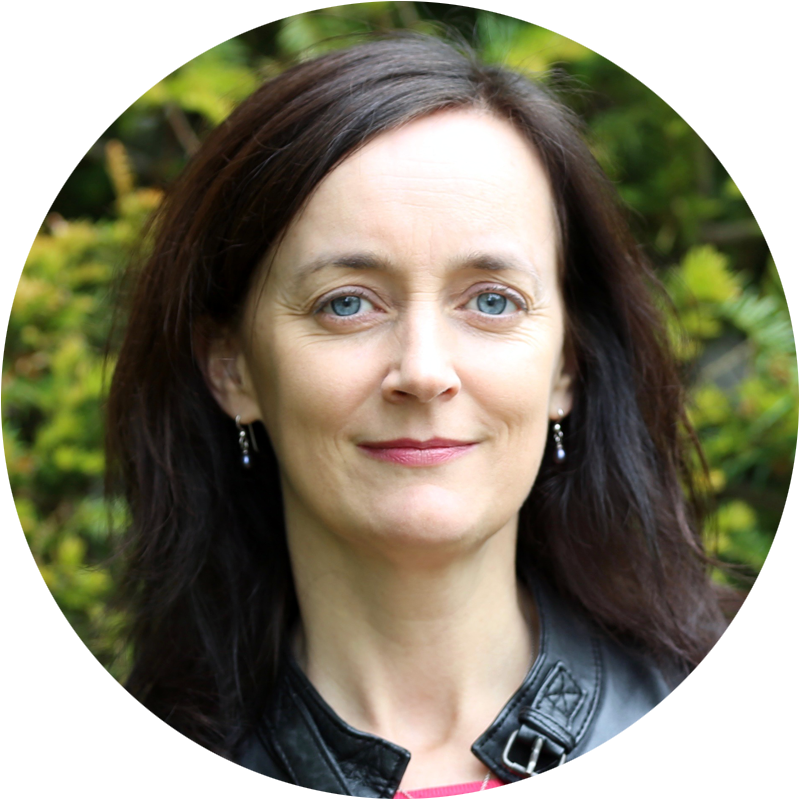
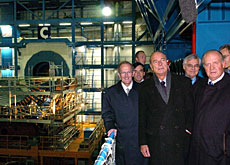
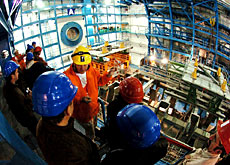
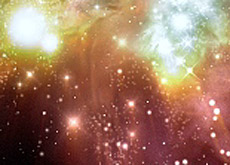
You can find an overview of ongoing debates with our journalists here. Please join us!
If you want to start a conversation about a topic raised in this article or want to report factual errors, email us at english@swissinfo.ch.